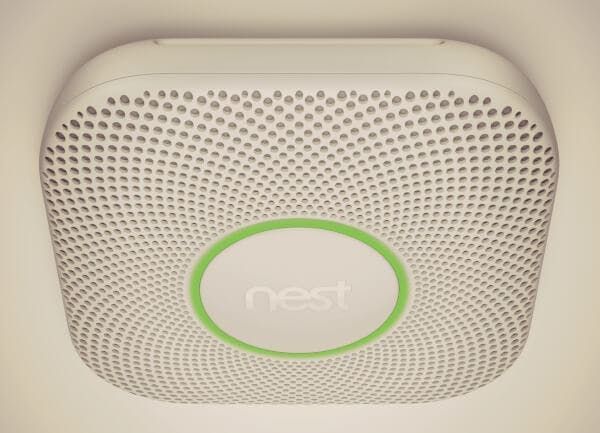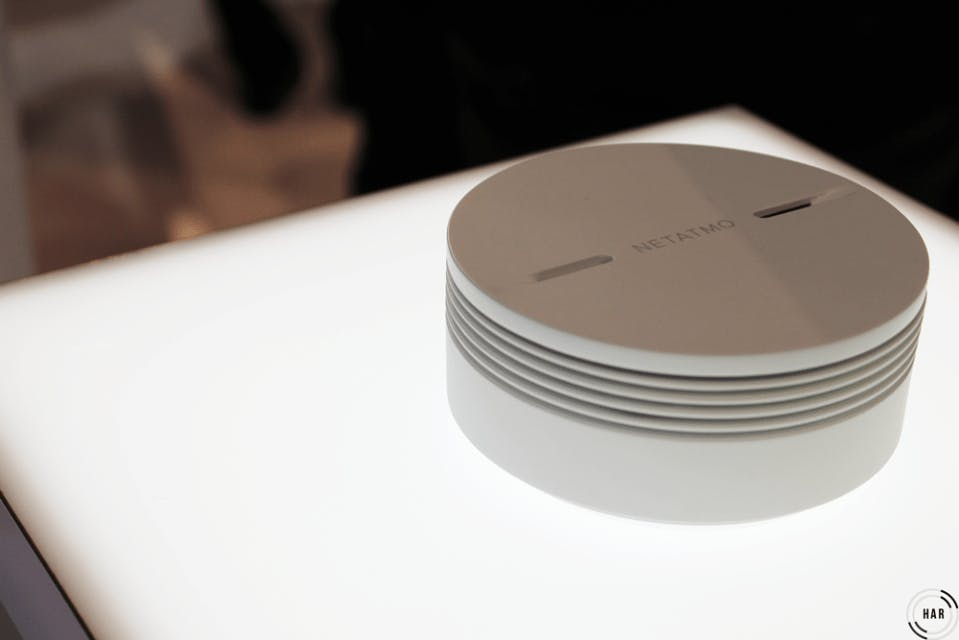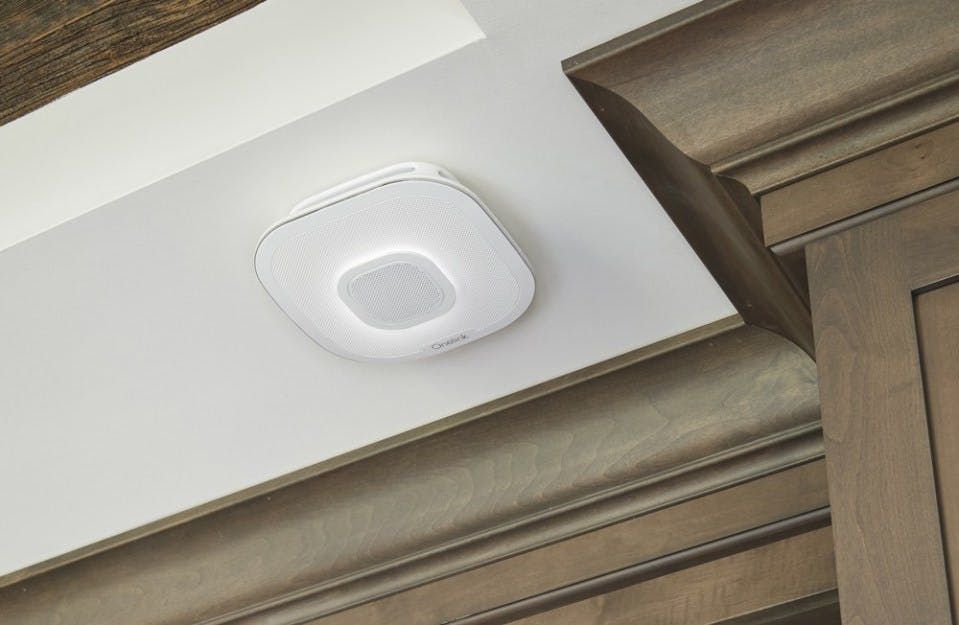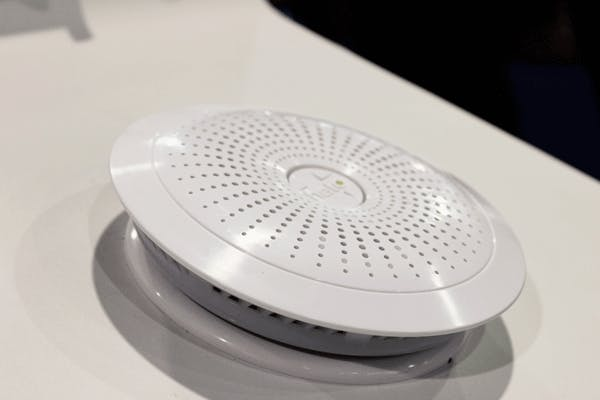Should You Upgrade to a Smart Smoke Alarm?
The biggest advantage of moving to a smart smoke alarm is connectivity. Your smoke alarm can work with other connected devices and can also send alerts to your smartphone. There are other features that smart smoke detectors tout as being special, but these are often features found in non-smart smoke alarms as well. With that said, is the ability to send notifications to your phone and integrate with other smart home devices enough to justify the higher price tag?
 |  |  |  | |
| Model | 2nd Generation | Safe & Sound | Smart Smoke Alarm | Worry-Free AC Combination Smoke & Carbon Monoxide |
| Phone Alerts | Requires RemoteLync for $75.91 | |||
| Fire | Split-Spectrum Sensor (Photoelectric) | Photoelectric | Photoelectric | Photoelectric |
| Carbon Monoxide | ||||
| Battery Life | Multi-Year | 10 Years | 10 Years | 10 Years |
| Verbal Siren | ||||
| Other | Works with Nest | Homekit-enabled with AirPlay 2 (Coming Soon), Alexa Voice Service, Google Assistant | Homekit-enabled, IFTTT | Interconnects with Other Kidde Devices Including a Dual Ionization/Photoelectric Alarm |
| Where to Buy | Buy Here | Buy Here | Buy Here | Buy Here |
Ionization, Photoelectric, or Dual
When choosing a smoke alarm, you might see words like Ionization and Photoelectric and wonder which one’s better or which one’s right for you. In short, photoelectric sensors are better at detecting smoldering fires. On the other hand, ionization sensors are better at flaming fires. Both sensors will detect both types of fires; the difference is the speed at which they do so.
We use a dual smoke alarm and that’s what we recommend. It’s also what the National Fire Protection Association recommends.1 Most fire chiefs agree that ionization detectors do not detect the type of fire most likely to kill. If you must pick between the two, photoelectric is the best choice.
Onelink Sensors
Onelink Safe & Sound is photoelectric, but they agree that you need both. They suggest that you use photoelectric and ionization smoke alarms on each level of your home and in every bedroom.
Kidde Sensors
Kidde can support both technologies within the same system, but not the same device. You can use the KN-COSM-IBA, which is carbon monoxide and ionization smoke detector, the KN-COPE-IC, which is a carbon monoxide and photoelectric smoke detector, or the PI2010, which is a dual smoke detector, all within the same interconnected, wired setup. Ionization detects fast-flame and photoelectric detects smoldering fires.
Nest Sensors
Nest, on the other hand, has decided to forgo an ionization detector in favor of a photoelectric sensor. However, it uses a new type of sensor called a Split-Spectrum Sensor. According to Nest, this allows Nest Protect to monitor for “a wide range of smoke events, including slow, smoldering fires and fast flaming fires.”2 However, according to ConsumersReports.org, Nest was the slowest to detect fast-flaming fires during testing.3 As such, they did not add the device to their list of recommended smoke alarms.
Nest admits to not being the fastest. This is by design. Their focus was on creating a device that would quickly react without overreacting. For example, Nest Protect will glow yellow as an early warning that something might be wrong. And it includes Steam Check, a feature based upon the built-in humidity sensor that distinguishes between steam and smoke. While Steam Check doesn’t make the alert any faster, it does reduce false alarms.
According to our source from Nest,
"Nest designed Nest Protect to quickly and effectively alert people to fire and CO hazards in the home, while also providing thoughtful, friendly information through spoken alerts, Heads-Up (before conditions reach a critical level), and mobile notifications."
Finally, we were told that Ionization detectors do produce a small amount of radiation, which was concerning to Nest and factored into their decision.
Netatmo Sensors
Netatmo Smart Smoke Alarm uses a photoelectric sensor.
Features Compared
Nest Protect Features

Nest Protect is attractive because it’s part of the Works with Nest program. Through Works with Nest, Nest Protect can connect to multiple smart home products and even home security products. For example, it can integrate with Wink, Philips Hue, Control4, Rachio, Scout, and more. Of course, it also integrates with Nest Secure and even Nest Cam. Even without a Nest Aware subscription, Nest Cam will start recording if Nest Protect detects an emergency.
Nest Protect also includes Nest’s signature intelligence and smart design. Nest’s goal was to create a device that worked without being annoying, and we think they’ve achieved that goal. Features like a human voice instead of a one-size-fits-all siren, app hushing, and a light warning system are all included to ensure that you don’t end up ripping the device off of your ceiling at 3 am. Beyond that, the app has several useful features like notifications that will let you know when the device’s battery is running low long before it starts to chirp. You can also test your alarm from the app.
The downside of Nest Protect is that Nest is new to smoke alarms. Nest Protect was launched in 2013 before being upgraded to a second-generation version. While some might argue that a five-year-old product isn’t new, it is new in the smoke alarm world. The problem with newer devices is that they often come with quirks. With something as important as a smoke alarm, you can’t extend grace to allow for new device quirks.
One of Nest Protect’s biggest quirks was identified and corrected several years ago. The device had a “wave to hush feature,” which was built-in for convenience. Unfortunately, they found that users could “unintentionally activate” this feature, causing delays in emergency situations. This feature was yanked and replaced with App Silence.
Netatmo Smart Smoke Alarm Summary

Launched at CES 2017, Netatmo Smart Smoke Alarm connects to WiFi, detects smoke, sends alerts to your smartphone, and can even tell you which room the threat is located in. Via the Netatmo Security app, you can call for help or even disable the alarm. As an added security feature, you must be home and connected to the smoke alarm over Bluetooth to disable it. It also includes a self-check feature that pings every few seconds to make sure your smoke detector is working properly.
Unfortunately, Netatmo is missing one major security feature; it doesn’t detect carbon monoxide.
Fortunately, it has plenty of friends to help provide other perks. First of all, Netatmo Smart Smoke is HomeKit-enabled. Using the Home App or Siri, you can view your smoke alarm’s current status. You can also connect the smoke alarm to other HomeKit-enabled devices. For example, if smoke is detected, you can have all your smart lights turn on. Similarly, Smart Smoke Alarm is compatible with IFTTT, a free service that helps connect different smart devices and services. Just like with HomeKit, if Netatmo detects smoke, IFTTT can trigger smart home actions. The difference is that IFTTT connects with hundreds of brands and services while HomeKit is still rather limited.
First Alert Onelink Safe & Sound Features
Launched at CES 2018, Safe & Sound is even newer than Nest Protect; however, First Alert has plenty of experience in the smoke detector field.
There are several smart features that set Safe & Sound apart, starting with an improved speaker. The speaker adds a touch of fun, which we’ll get to in a minute, but it also enables voice and location technology. If Onelink Safe & Sound detects smoke or carbon monoxide, it will let you know, sound its 85dB alarm, and send a push notification. Finally, the alarm includes a wireless interconnection feature. If it detects danger, it will activate all of your Onelink alarms.
Safe & Sound’s speaker is also a smart speaker with built-in access to Alexa Voice Service. This means that you can talk to Alexa via your smoke alarm and even play music, podcasts, or audiobooks. Second, Google Assistant is also built directly into Onelink Safe & Sound. In the event of a fire, you could say, “Hey Google, unlock my front door,” or “Alexa, turn off my ecobee thermostat.”
Finally, the device is HomeKit enabled. You can connect Safe & Sound to other HomeKit devices to create automated rules and scenes. Safe & Sound will also support AirPlay 2, which means you will be able to stream Apple Music or playback audio from your Apple devices.
Safe & Sound offers a lot of bells and whistles, which is reflected in its price. A single unit sells for $249.95 on First Alert’s website.
Other Options
If you’re thinking of upgrading to a connected smoke alarm for smartphone notifications and smartphone notifications only, there are other options.
Cameras With Sound Detection/Recognition
For the most part, any device that monitors for sound will work. This list includes home security cameras. However, three security cameras have taken this a step further: Spot, Wyze Cam 2, and Netatmo Welcome.
Spot, by iSmartAlarm, is a security camera that is designed to specifically monitor for the sound made by a smoke alarm or a carbon monoxide detector. If a sound is detected, it sends a notification to your phone. What’s great about using a camera is that you can swipe the notification to check in on your home live. Streaming live footage from your camera, you can see and hear what’s going on before calling for help. However, we’ve tested Spot and did receive a false alarm. It read the sound of an indoor drone as a carbon monoxide detector. And we're certain that a drone is not the only possible false alarm trigger.
Wyze Cam uses the same hardware as Spot, but different software. You can read more about Wyze Cam 2 here.
The third camera option is Netatmo Welcome. Netatmo recently upgraded their camera with advanced sound detection. The feature works exactly like Spot, and though we own a Welcome, we have not tested this feature yet.
Devices That Recognize Smoke Alarms
If security cameras make your skin crawl, Point was made for you. The Point device is an unobtrusive security device that monitors for sound and other things. It listens to your home and senses what’s in your air. While it can’t detect smoke like a smoke alarm, it can detect the sound made by smoke alarms.
Professionally Monitored Smoke Alarms
But what happens if you aren’t home? What happens if you miss the alert to your phone and your pet needs help? The answer is professional security monitoring. Another way to get alerts on your phone is through a home security system. Most people assume that home alarms are only for burglaries, but by adding a smoke detector, home alarms can also monitor for fires. If a fire is detected, the company will reach out to you and call the fire department.
Not all alarm companies, however, bundle professional fire monitoring with their security monitoring services. Some charge an extra fee if you wish to add monitored smoke alarms to your system. If you're in the market for a security system that offers all-inclusive professional monitoring (for burglary, fire, and medical emergencies), such as the likes of Frontpoint, ADT, or Vivint.

Options No Longer Recommended
Halo (Discontinued)

Halo launched post Nest, and it sat on our list as a top contender for some time. Unfortunately, they were unable to make it. The company is discontinuing the product and cloud support. Current users will have the option of connecting their smoke alarms to a SmartThings hub or to an Iris by Lowe’s, but will no longer be able to connect to the smoke alarm directly, which is both disappointing and concerning for those who heavily invested in the device.
We were able to experience Halo at CES 2016 and thought highly of it. One of its more unique features was something called “weather alerts,” which notified users of events like tornadoes or hurricanes. Halo also claimed that their dual smoke alarm was faster than Nest Protect by a full minute and a half during a UL smoke test. Phil Smith, former CMO of Halo, claimed this was in part thanks to ionization, but also because the alarm can read temperature and humidity. When Halo monitored for smoke, it used data from all sensors. The device then profiled different types of smoke and used an algorithm to distinguish burnt toast from a real emergency.
FINAL THOUGHTS
We do not see the value in ripping out a perfectly good smoke alarm system. After researching, We’ve decided to leave our current system in place, which is an interconnected smoke alarm system. If one of the sensors detect smoke, they all sound. Smoke alarms need to be replaced every ten years, and our system still has a few years of useful life. On top of that, we own an iSmartAlarm Spot, Welcome, and a Wyze Cam 2; all are capable of sending a notification to our smartphones if they recognize the sound made by a smoke alarm. We also have a Point Device and a monitored home security through Frontpoint. We see no reason to rip and replace a system that works well. Do you?

